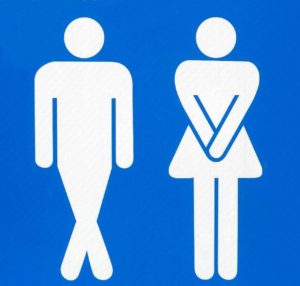 Most people think that being diagnosed with cancer is tantamount to being called a ticking time bomb, but cancer can be treatable as long as it is diagnosed early. This may be welcome news to those who may have bladder cancer or those who know someone who does, as bladder cancer is oftentimes detected early.
Most people think that being diagnosed with cancer is tantamount to being called a ticking time bomb, but cancer can be treatable as long as it is diagnosed early. This may be welcome news to those who may have bladder cancer or those who know someone who does, as bladder cancer is oftentimes detected early.
What is bladder cancer?
Bladder cancer occurs when an abnormal growth of tissue, also known as a tumor, develops in the bladder lining. Depending on the type of bladder cancer, the tumor can spread to the surrounding muscles. Seven out of ten cases of bladder cancer fall under non-muscle-invasive bladder cancer, which means that the tumors are contained inside the bladder lining. Majority of these patients do not die from the cancer.
It is most common in older adults, with over 90% of cases are in peopled aged 55 and above. Men are also more likely to get it than women.
Common Symptoms
The most common symptom of bladder cancer is blood in the urine. Other symptoms include frequent urination, a burning sensation while urinating, unintentional weight loss, pelvic pain, and swelling of the legs. Frequent episodes of urinary tract infection can also be an early symptom of bladder cancer.
Risk factors
Bladder cancer is influenced by certain risk factors such as prolonged exposure to harmful substances, which include industrial and organic chemicals, particularly those in the dye industry, as well those who make rubber, textiles, leather, and paint products. Therefore, workers such as painters, hairdressers, truck drivers, and printers are at higher risk of getting bladder cancer.
Aside from prolonged exposure to chemicals, another risk factor is tobacco smoking. Tobacco contains carcinogenic chemicals that pass into the bloodstream and are filtered into the bladder through the kidneys.
To minimize your risk for bladder cancer, consider the following:
- Stop smoking – This is the most significant contributor to bladder cancer, and one that you can take control of. According to American Cancer Society, “smokers are 3 times as likely to get bladder cancer as nonsmokers.” It is also the cause of half of the cases in both genders.
- Reduce exposure – If you are working in an industry that is at risk of bladder cancer, then consider taking precautions when handling harmful chemicals. Likewise, if you are already working in these environments, then please do not smoke as doing so doubles your risk of getting the disease.
- Drink lots of water – Drinking lots of fluids will help you flush your bladder more frequently and more effectively, which then has the tendency to flush chemicals that may be in the bladder lining.
These are some of the common things you can do to reduce your risk of bladder cancer. If you know someone who is diagnosed with it, try to reassure them that it is not a grim prognosis. With the proper treatment, they can still get well.
Img c/o Pixabay.


